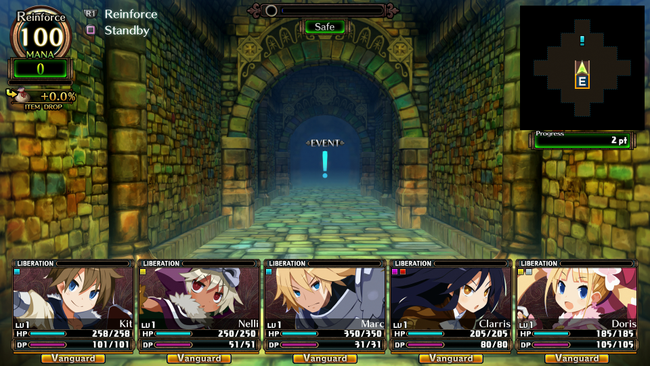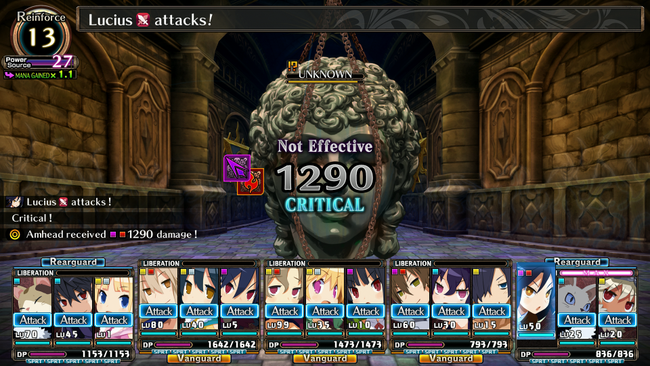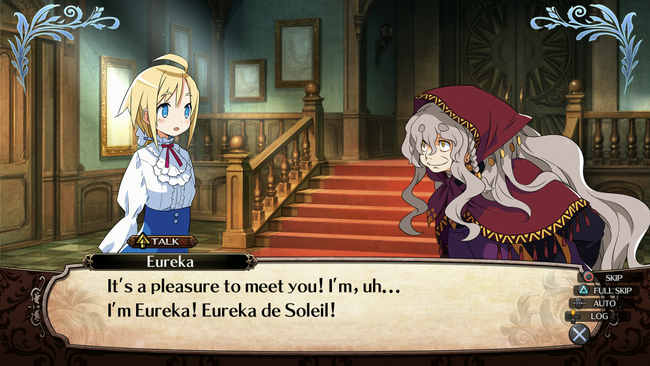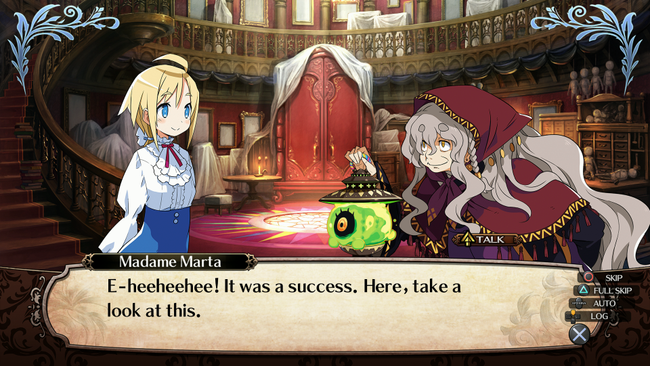
Labyrinth of Galleria: The Moon Society Review
There are a lot of big & interesting RPGs landing in 2023 - including a few that have already been released - but the one I was probably most eager to play was Labyrinth of Galleria: The Moon Society. This is the second entry in Nippon Ichi Software's dungeon-crawling series, following Labyrinth of Refrain: Coven of Dusk's English release in 2018.
Labyrinth of Refrain was something of a surprise darling, at least to me and some other RPG Site staff members. From a developer that hasn't typically made dungeon crawlers, Refrain offered an interesting take on the genre while introducing plenty of its own flavor, both in its gameplay mechanics and narrative storytelling. We were ultimately so fond of the game that it even landed in our Top Five RPGs of 2018, along with the likes of Monster Hunter World and Dragon Quest XI.

Just like its predecessor, Labyrinth of Galleria is a mechanically dense RPG, perhaps exceedingly dense, even among its dungeon-crawling contemporaries. I will not go into all the specific details of the game's many layered gameplay systems and subsystems in this review, because they are simply too numerous to depict.
That does mean both of these Labyrinth games do have a bit of an entry barrier to those interested in the story or characters, but don't resonate well with the first-person dungeon-crawling genre. Galleria has a lot of tutorials, almost overwhelmingly so. To someone like me who has a lot of experience with DRPGs, I found the pacing and number of tutorials to be palatable though numerous, but I could easily see how the sheer density of mechanics could shy away those considering making this game their entry into the genre.
Unlike most party-based dungeon crawlers that have you create a team of 5-ish battle participants based on different classes like warrior, mage, cleric, etc...., Labyrinth of Galleria (like Refrain before it) has a party that consists of 5 teams instead of 5 characters. That means you can have 15 individual units actively participating in battle, and that's not including the numerous units you can also place in support slots behind the front 15. All-in-all, that means you can potentially have a total of 40 units all playing a role in battle, in 5 teams of 8. These mini-teams that make up your battle group are called "covens".

That means not only do you have to pay attention to each character's skills & equipment, as is typical, but you also have to factor in the formation of each coven, which includes the total number of slots and varying abilities. Some covens are better suited for support-type units, some covens will fare best on the front line, and some covens are exclusive to cats.
There are other systems in play too, such as weapon synthesis, unit reincarnation, and varying unit stat distributions. Galleria does have some auto-optimize options, which tend to do a pretty reliable job in setting up your units without micro-managing, but even then, be prepared to be spending a considerable chunk of time in menus setting up your team.
I'm not sure if Labyrinth of Galleria is actually less difficult than Labyrinth of Refrain, but I had a noticeably easier time playing through it on the normal difficulty. Perhaps difficulty spikes present in the original have simply been ironed out, or perhaps I just had significantly better know-how in approaching party construction and battle preparation this time around.
Even so, for those who relish crunchy mechanics and agency in creating their team, Galleria is just as enjoyable a dungeon crawler as Refrain before it. One of the reasons I adore this genre is the satisfaction of creating a team of your choosing to take out a variety of tough foes, and the catharsis of overcoming those challenging bosses is unmatched. The dungeon design is just OK, however, and I did wish there was a little bit more variety in the dungeon aesthetics.

While many dungeon-crawling games usually opt for lighter story elements, such as the Etrian Odyssey series, NIS' offerings are almost half visual novels to go alongside the labyrinthian trekking. While the debut entry Labyrinth of Refrain's gameplay is excellent, its character writing was also standout, and its localization and English voice work was also well-done.
That said, Refrain is definitely a slow burn starting out. It takes a while for the story of a 30-something disabled gay witch to come into focus, but it's a punch in the gut when it is done.
Galleria's narrative is much, much more intricate than Refrain's. That means it's extremely difficult to discuss what the game's story is about without giving away some of the mystery. All I will say, at this point, is that the narrative is not what it initially seems. My colleague James wrote an editorial based on the Japanese version of the game titled 'I Hate That I Can't Talk About Why I Love Labyrinth of Galleria'.

The opening premise to Galleria is that Eureka, a teenage noblewoman, heads to work for a peculiar lord of an out-of-the-way manor, working alongside elder witch Madame Marta to explore a strange magical labyrinth that exists underneath the manor grounds. Much like Refrain, Galleria is also a slow, slow burn starting out. But as you continue on in the storyline, strange things will begin to happen, weird characters will appear, and eventually, things will evolve into a complex web of character motivations and unusual happenstance.
Galleria's narrative is the type where, at around the 40-50 hours mark, you will have little idea of what is actually going on in the world. I even started jotting down notes of characters I met, statements made, and mysterious events that needed answers later. It's that type of story. In order to see the "True Ending" which mostly wraps a bow on the game's interweaving plot, you are looking at roughly around 100 hours of playtime, which includes the post-game.
I won't spoil any more than that. And if you feel like I may have spoiled you already on Galleria's narrative, trust me, I have not.
Eventually, all the mysterious components of Galleria's narrative do fall into place, and the storytelling on display is interesting by concept and structure alone. However, all said and done, it still did not land as strongly for me overall as the story of Dronya & Luca in the previous entry. I also felt the English voice work was a tad weaker this time around (having been done by Sentai Studios instead of Bang Zoom), although Eureka herself has an appropriately endearing cadence. I can't help but be a little bit disappointed in the characters of Galleria, for reasons difficult to say without giving away too much, but I still come away largely content.
Labyrinth of Galleria: The Moon Society is an admirable follow-up to Labyrinth of Refrain, with polished gameplay systems, an intriguing storyline, and a lengthy runtime. The narrative and characters did not land for me quite as strongly as Refrain's, but I'm still hoping NIS continues with their newfound dungeon-crawling franchise.